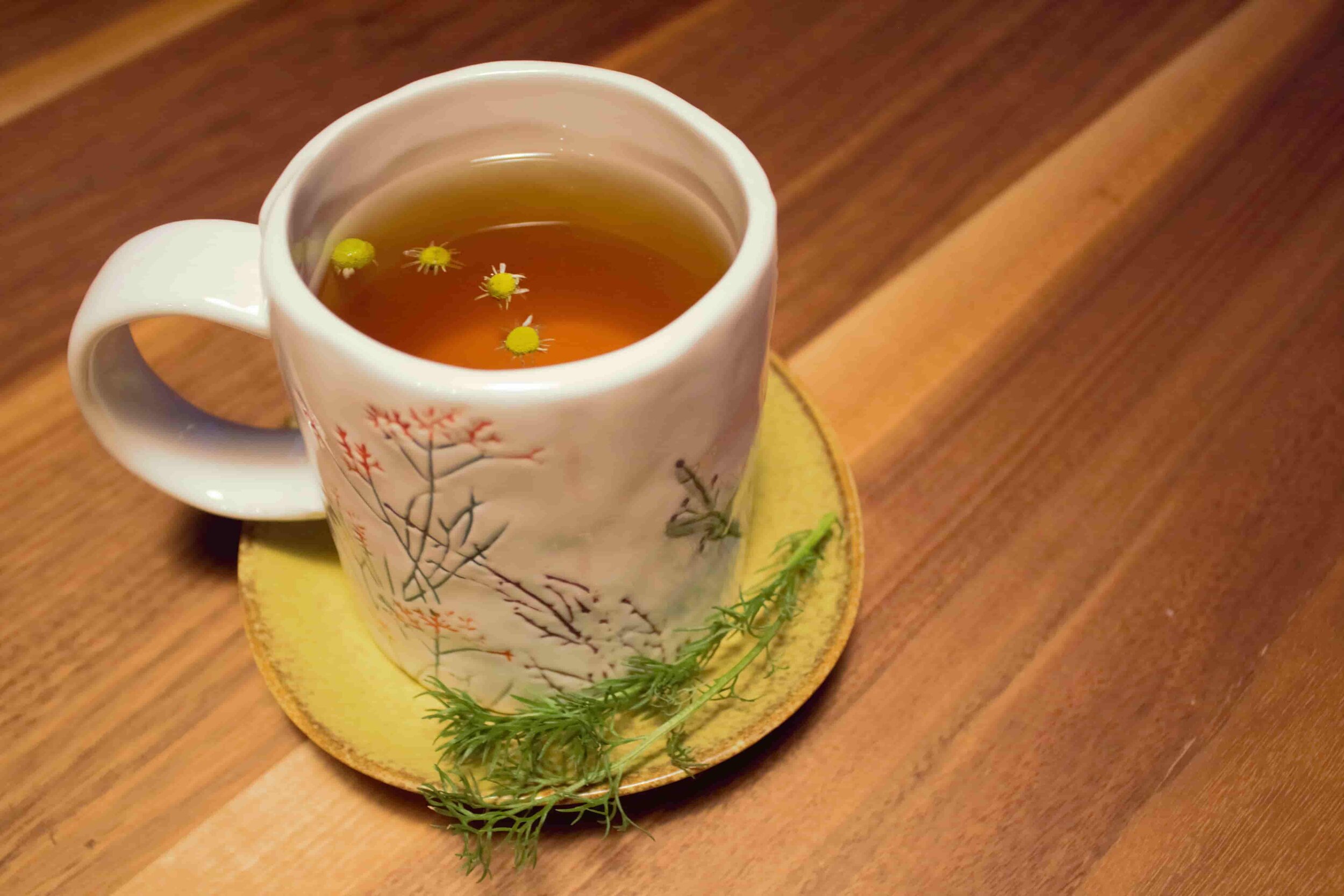How to grow and dry chamomile for tea
This post contains affiliate links, which means Steeped Dreams earns a small commission if you purchase with these links or discount codes (at no cost to you). Please know all opinions in reviews on Steeped Dreams are genuine and not influenced by affiliate partnerships.
If you’ve got a clump of poor soil, direct sunlight, and unwavering patience, growing your own chamomile tea might be the ideal project for you.
Chamomile is one of the best known herbal types of tea, recognized for its miniature daisy-like blossoms and soothing scent. Having been used as treatment for health issues like cold symptoms, inflammation, insomnia, and anxiety for centuries, it’s no wonder about one million cups of chamomile tea are drunk each day [1].
After a failed attempt at growing chamomile indoors, I had more success with chamomile seeds outside in a planter, even in the incredibly hot climate where I live. After blossoms started to appear, I knew it was time to get down to business and use them for tea.
What you’ll need to grow and dry chamomile for tea:
Chamomile seeds
Any soil (this plant is very hardy)
Direct sunlight
Small sieve for washing and drying
Airtight container to store dried chamomile
1. Sprinkle seeds on soil
Compared to many finicky plants, chamomile is rather easy to grow and doesn’t need much care. The University of Wisconsin suggests growing chamomile in full sun and in well-drained soil [2].
To grow chamomile, simply sprinkle seeds on the surface of the soil. Because chamomile is quite happy in poor soil, you don’t have to worry about fertilizing and it doesn’t attract many pests. Keep to top of the soil moist until the seeds germinate. It’s helpful to cover the soil with plastic wrap to seal in the moisture. After about a week or two the little seeds begin to sprout. Once they’ve grown a bit more, you can thin down the chamomile to a plant every half foot or so. Doing this will prevent fungal disease.
As far as watering goes, the shallow roots require that the top layer of soil be kept moist. I’ve found that chamomile is very “vocal” about letting you know it needs water. So if you see it start to droop, it’s likely time for a drink.
After two months or so you should have your first flowers start to bloom.
If you’re looking to get a bountiful harvest of chamomile blossoms to use for tea, try to maximize the space you use to sow seeds. The plant grows quite bushy once mature, so you’ll end up thinning the plants down to only a few. I made the mistake of only using half of a single pot for planting chamomile, which yielded 3-4 mature plants.
2. Pick the chamomile flowers
For the best quality, harvest the flowers when they are at full bloom (when the petals are sticking straight out) [2]. I used my fingers or scissors to cut the flowers at the stem daily.
Because I had so few plants, I was only able to pick an average of five flowers a day. Again, PLANT MORE!
3. Wash and dry the chamomile
After cutting off the remaining stems of your chamomile flowers, it’s time to wash out all the little bugs and mysterious outdoor particles. I used a small sieve to make sure I didn’t accidentally wash any down the drain, as the flowers tend to float.
To dry chamomile, the University of Illinois Chicago suggests to avoid direct sunlight, as this can harm the chamomile oils [3]. Instead, dry your chamomile flowers indoors in a warm and well-ventilated area.
I used the same small sieve from washing to cover my chamomile as they thoroughly dried over a few days.
4. Store in an airtight container
My small harvest after two weeks of daily picking.
Once dry, I stored my chamomile in a reused chocolate container. While tea’s shelf life is typically around two years, it’s advised to store chamomile flowers in a sealed container for up to a year [3].
🍵 Interested in sustainability and tea? Learn about creative ways to reuse tea bags.
Not only did I have so few flowers to begin with, but once dried, the chamomile looked extra tiny and sad. I repeat, PLANT A LOT if you want to use your dried chamomile for tea.
5. Steep a soothing cup of tea
You can use either fresh or dried chamomile to make a cup of tea. For a visually appealing cup, try a combo of the two by steeping dried flowers and sprinkling fresh ones on top.
To steep tea, it’s best to use a teaspoon for dried chamomile or two teaspoons for fresh chamomile [3]. Some people enjoy their chamomile tea with a bit of honey or lemon, but I prefer a plain cup right before bed.
-
[1] Kolanos, Renata, and Szabina A. Stice. “German Chamomile.” Nutraceuticals, 2021, pp. 757–772., doi:10.1016/b978-0-12-821038-3.00044-6.
[2] Mahr, Susan. “Chamomile, Matricaria Chamomilla.” Wisconsin Horticulture, hort.extension.wisc.edu/articles/chamomile-matricaria-chamomilla/.
[3] “German Chamomile (Matricaria Recutita).” UIC Heritage Garden, heritagegarden.uic.edu/german-chamomile-matricaria-recutita.









![[Review] Firebelly Tea - Sleekly designed functional blends](https://images.squarespace-cdn.com/content/v1/6008e4b84dfdb80938cd0442/cdd4b217-3704-40dd-b11e-bc18ff413610/firebelly+tea+review.JPG)
![[Review] Harney & Sons - Paris tea and two similar blends](https://images.squarespace-cdn.com/content/v1/6008e4b84dfdb80938cd0442/5cf20e59-ce49-4fba-b9dc-16f1f43a1349/harney+tea+with+plant.JPG)


